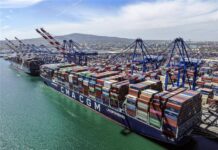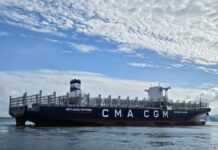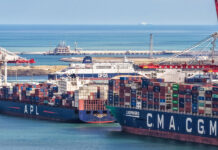
Pacific International Lines (PIL) continues to sell container ships amid talk of financial pressures at the Singapore-based liner operator.
On 2 March 2020, Taiwanese carrier Wan Hai Lines said that it had purchased two 11,923TEU ships from PIL for US$186.8 million.
The ships, 2017-built Kota Panjang and 2018-built Wan Hai 805, are sister vessels that were built by Yangzijiang Shipbuilding. Since May 2019, Wan Hai had been operating Wan Hai 805, having chartered the ship for its Asia-US West Coast service.
Wan Hai’s announcement came just after the week-ended 29 February 2020, when PIL completed the sale of the 2002-built 736 TEU Kota Teguh to South Korean feeder operator Dongjin Shipping, which has renamed the vessel Dongjin Fides. The sale was said to have been agreed in December 2019, according to VesselsValue.com. While the vessel price was not disclosed, the ship had a market value of around US$2.47 million at the time it was sold.
In July 2019, Dongjin Shipping had purchased another vessel from PIL, the 2002-built 720TEU Kota Tegap, for US$3.25 million, and renamed the ship Dongjin Fortune.
In the same month, PIL sold the 1996-built 1,088TEU Kota Harta (now renamed Salam Mewah) to Malaysian domestic feeder operator Malaysia Shipping Corporation, for an undisclosed price; the ship was valued at US$2.7 million at the time.
In May 2019, PIL sold Kota Teraju, a sister ship to Dongjin Fortune, to another South Korean feeder operator, Korea Marine Transport Company (KMTC Line), which renamed the vessel Sunny Dahlia.
VesselsValue.com shows that since 2017, PIL has sold 16 other container ships to Chinese finance lessors, on leaseback terms. These ships range in capacity from 907TEU to 11,923TEU and are of varying ages, with the year of construction ranging from 2000 to 2019. Four of these leaseback deals were in 2019.
In February 2020, PIL announced that it was exiting the trans-Pacific trade to focus on its regional services, having ceased Asia-Europe services in early 2019.
PIL eschewed joining alliances to retain its independence, but experts said this made it untenable for the company to compete in the Asia-Europe trade due to the economies of scale involved.
In May 2019, PIL’s container manufacturing subsidiary, Singamas Container Holdings, sold five of its Chinese container entities to a COSCO unit for US$565 million, to concentrate on its logistics services and generated cash.
In the same month, reports surfaced that Singapore’s sovereign wealth fund, Temasek Holdings, had extended loans to PIL in 2018.
Amid weak freight rates, PIL’s loss widened to US$203.32 million in 2018, from US$141.18 million in 2017, becoming one of the most under-performing liner operators.
Martina Li
Asia Correspondent





